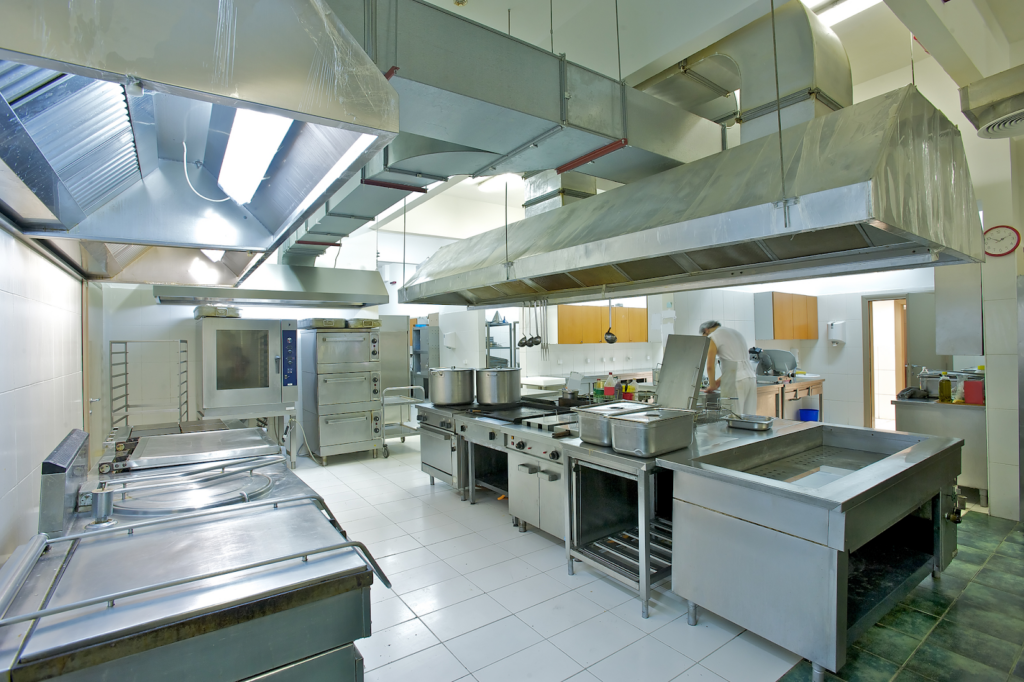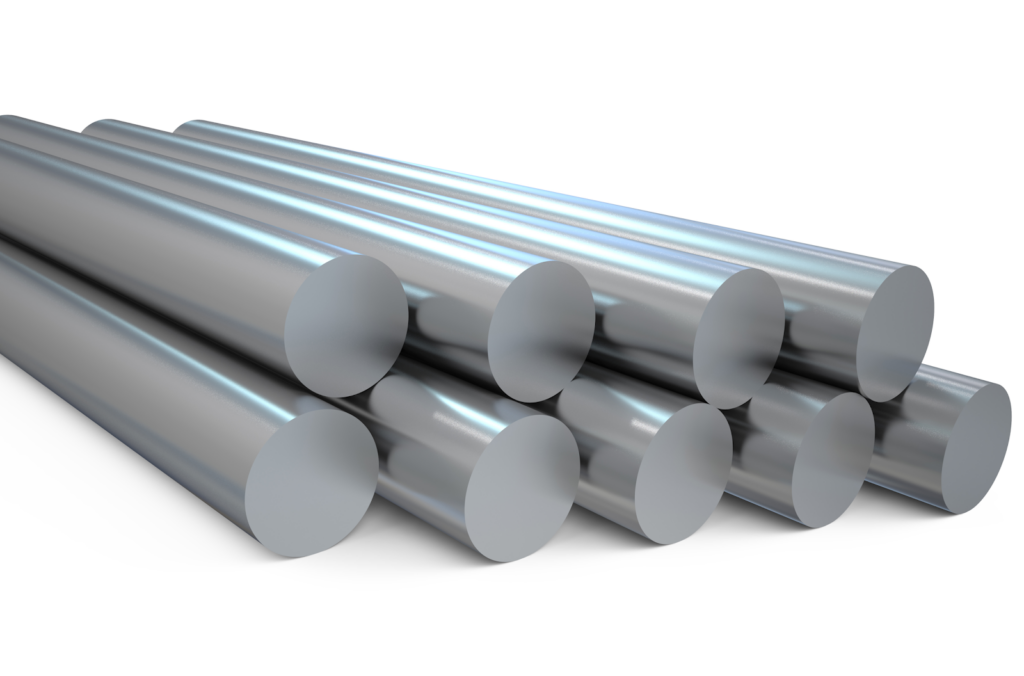Stainless steel is an alloy that is crafted from a combination of several metals. It is renowned for its unmatched strength, durability, and versatility. Many industries are making the most of the advantages of stainless steel, including the construction, medical, and food sectors, to name a few.
It’s not just highly resilient but also resistant to scratches, rust and corrosion, and it is easy to clean. Its malleability allows it to be fashioned into various shapes and sizes, and its reflective surface means it is highly suitable for decorative purposes. If you’re looking for a material that is both sturdy and pleasing to the eye, stainless steel is your ticket.
The advantages of stainless steel can take on a wide range of applications- a kitchen sink, an airplane wing, or a medical instrument. It seamlessly integrates into products in almost every industry, making it an incredibly flexible medium. Its unique qualities ensure it can withstand harsh environments or temperature extremes, such as industrial processing.
Additionally, its versatility means combining it with other materials to create even more sophisticated products. More importantly, stainless steel allows constant innovation. In designing new products, engineers and designers can experiment with various techniques and implement personalized design ideas for their company’s products. The possibilities are endless when it comes to this marvel of a material. This article will examime what is stainless steel.
The Composition of Stainless Steel
Stainless steels are type of steel alloy that is highly resistant to rust, corrosion resistance and staining. It comprises several different metals, including iron, carbon, chromium, nickel and sometimes molybdenum. The key element in stainless steel is chromium, which makes up at least 10.5% of the alloy.
This element reacts with oxygen to form a thin, invisible layer of oxide on the surface of the steel. This layer, known as the passive layer, gives stainless steel grades its unique properties. It prevents rust, corrosion and staining, making it a popular material for various applications, from kitchen utensils to medical equipment.
It can be made in various grades, each with unique composition and properties. The most common types of stainless steel are Austenitic steels, Ferritic stainless steels, Martensitic and Duplex stainless steels. Austenitic steels, for example, contain high levels of chromium and nickel, making them highly resistant to corrosion and staining while also being non-magnetic. Ferritic stainless steel is less resistant to corrosion than Austenitic, but is more resistant to stress-corrosion cracking.
Martensitic stainless steel is known for its hardness and durability, and is often used in knives and other cutting tools. Duplex stainless steel is a combination of Austenitic and Ferritic steels, and is highly resistant to corrosion, making it an ideal material for marine and off-shore applications. With its unique properties, stainless steel is used in various industries, from construction and transportation to food and beverage production.

Types of Stainless Steel
Stainless steel is a versatile metal widely used in various industrial and commercial applications due to its unique properties and characteristics. Several types of stainless steel are available, each with its distinct features that make them suitable for specific applications.
One such type is austenitic stainless steels, characterized by its high corrosion resistance and toughness. This type of stainless steel is often used in construction, food processing, and pharmaceutical industries, where high sanitation and corrosion resistance are critical.
Another type of stainless steel is ferritic stainless steels, known for its high resistance to corrosion and stress corrosion cracking. This type of stainless steel has a lower nickel content than austenitic stainless steel, making it less expensive to manufacture.
Ferritic stainless steel is commonly used in automotive and architectural applications, where aesthetics and durability are important factors. With the various types of stainless steel available, choosing the appropriate grade based on the intended application is essential to ensure optimal performance and longevity.
Strength of Stainless Steel
It is one of the strongest materials available, making it a popular choice for various applications. Its strength comes from combining chromium, nickel, and other added metals. This durable composition resists wear and tear caused by corrosion, rust and other environmental factors.
This makes it suitable for use in the construction industry, where it is used to build bridges, skyscrapers, and other structures that require strength and durability. It is also used in manufacturing equipment and machinery subject to heavy use and exposure to harsh chemicals. In addition to its strength, stainless steel fasteners are aesthetically pleasing and adds a modern touch to any design.
Another reason for the strength of common stainless steel is its ability to resist extreme temperatures. Its excellent thermal conductivity allows it to withstand high temperatures without weakening or melting. This resistance to temperature means that it can be used in various industries such as automotive, aerospace, and other industries where high temperatures are an issue.
It is also used in cookware where pans and pots must withstand high heat without deforming or breaking. Overall, the strength and durability of stainless steel make it an essential material for many industries where it is used in a wide range of applications, from building structures to manufacturing equipment and appliances.
Durability Factors
When it comes to durability, few materials can rival stainless steel. This versatile metal is known for its corrosion, staining, and heat damage resistance, making it an ideal choice for various applications. Whether you’re looking for cookware that will withstand years of use, or building materials that can weather the elements, stainless steel is a reliable option.
It’s also easy to clean and maintain, which helps to extend its lifespan even further. From appliances and cutlery to medical equipment and construction materials, stainless steel has proven time and time again that it can withstand the test of time.
Another important factor in the durability of stainless steel is its strength. This metal is incredibly strong and tough, making it an excellent choice for heavy-duty applications. Whether it’s supporting heavy loads or resisting impact and abrasion, stainless steel can handle it all. It’s also highly resistant to fatigue and stress, which means it can maintain strength and performance over time.
Combined with its corrosion resistance and overall durability, stainless steel is an excellent choice for anything from industrial machinery to sports equipment. With its many advantages, it’s no wonder that stainless steel remains a top choice for durability-conscious consumers and businesses alike.

Versatility in Applications
Stainless steel may be the most versatile material out there, and it shows in the vast range of applications it’s utilized in. From kitchen appliances to medical devices or a steel cable in construction, its remarkable properties and unparalleled durability enable it to perform outstandingly in almost all environments. The non-porous surface of stainless steel resists bacteria and corrosion, making it the go-to material for various industries.
It’s perfect for use in the healthcare and food industries because it can easily be sanitized and doesn’t react with substances it comes into contact with. Versatility is one of the major reasons why stainless steel is such a popular material choice, there isn’t anything it can’t do.
The possibilities for applications for stainless steel are infinite due to its unique blend of properties. It’s a material that can withstand extreme temperatures and pressures, making it suitable for use in aircraft engines and power plants. Not only is it incredible strong, but it also has excellent resistance to heat and cold, making it ideal for refrigerators and ovens.
Its aesthetic features also make it a popular choice for architectural applications including sculptures and building facades. Stainless steel is being used in almost every industry imaginable, and that’s because it’s one material that can be molded, shaped, and adapted with ease. Because of its versatility, stainless steel will continue revolutionising how we build and manufacture products.
Aesthetic Appeal
When adding a touch of sophistication and elegance to any space, stainless steel is the perfect material to achieve such a look. Its sleek, modern appearance is timeless, making it a popular choice among homeowners and interior designers. Whether used in kitchen appliances, furniture, or even as accents on walls or floors, the reflective surface of stainless steel adds a luxurious vibe that can make any room feel more polished and put-together.
Additionally, the durability and resistance of stainless steel to stains and corrosion make it an easy-to-maintain choice that can last for years without losing its aesthetic appeal. It’s no wonder why this material remains a top choice for those seeking a sophisticated look for their indoor and outdoor spaces alike.
Furthermore, stainless steel provides a versatile appeal that can fit any design style, from contemporary to traditional. It’s a material that can be seamlessly integrated into existing decor or serve as the focal point of a room. Its reflective surface can also help reflect light, brightening dark corners and visually enlarging space.
Available in different finishes, from brushed to polished, stainless steel can adapt to any color scheme, adding a modern touch to any design concept. Without a doubt, the aesthetic appeal of stainless steel can instantly transform any space, making it an excellent investment for those looking for a durable, long-lasting, and stylish addition to their home or business.
Conclusion
In conclusion, there’s no denying stainless steel is a formidable material, renowned for its unrivaled strength, durability, and versatility. From cutlery to medical devices, automotive parts to aerospace components, it’s no wonder stainless steel is the go-to material for many products.
With its unique chromium, nickel, and molybdenum formula, stainless steel offers a level of resistance to wear and tear, heat, and corrosion that simply can’t be matched by other materials. Beyond its utilitarian applications, stainless steel has also found a place in fashion and interior design. Its sleek, modern aesthetic pairs well with various styles, and its durability ensures it will last for years.
In the end, stainless steel’s magic lies not just in its physical properties, but in its ability to adapt and evolve to meet the needs of an ever-changing world. As new technologies and products emerge, stainless steel remains at the forefront of innovation, providing a reliable and enduring solution to any problem.
Whether you’re building a skyscraper or designing a piece of jewelry, stainless steel’s strength, durability, and versatility make it an indispensable component of modern life. So the next time you see a stainless steel appliance or tool, take a moment to appreciate the magic behind this remarkable material.






